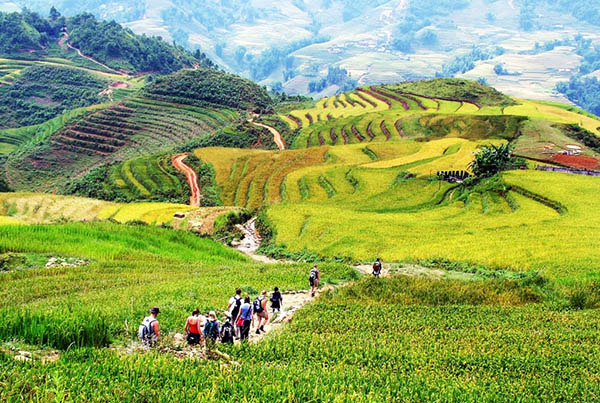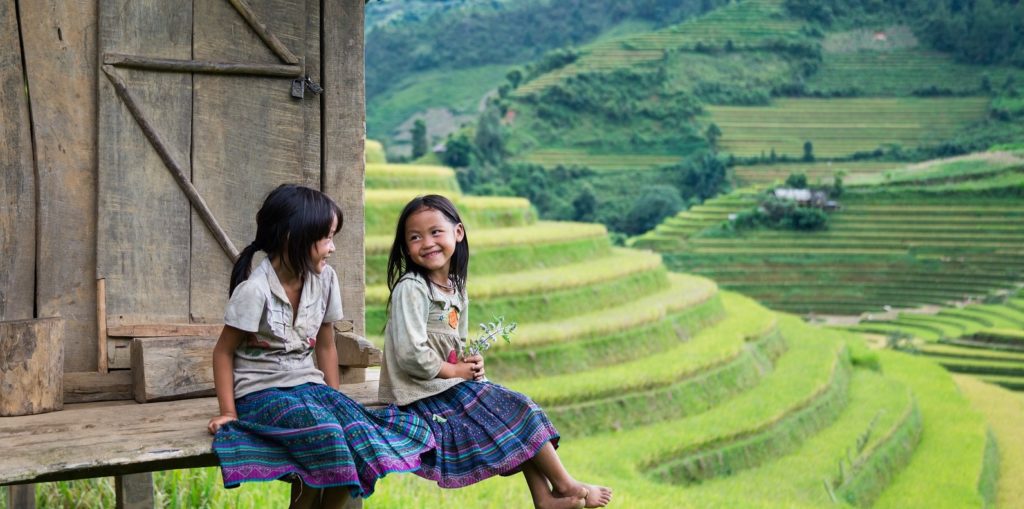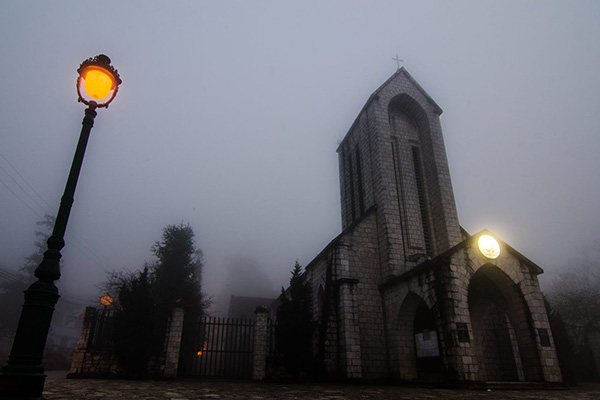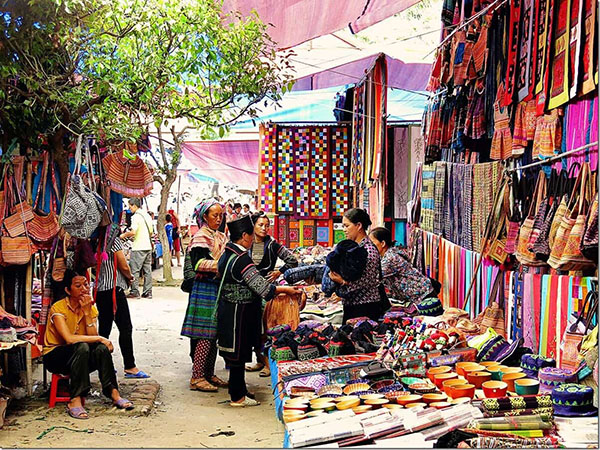Sapa is one of the most popular destinations in Northern Vietnam as it is famous for its cool temperature, breath-taking landscape, and culture authenticity. The most breathtaking hill station reflects the signature of French architecture and colorful hill tribal cultures. Otherwise, it is home to ethnic minorities, rice terraces, unique villages, and the Fansipan. Welcome to Sapa tours from Hanoi on three days, we offer the detail of the trip for the demand. The highest commitment is to bring travelers the most authentic and unique experience with a maximum of satisfaction.
Finishing the tour in Hanoi, you will depart to Sapa – the misty town by train or by car. Of course, it is a paradise for tourists who love to explore the natural beauty by trekking and want to experience a unique culture.

On the first day: Lao Chai – Ta Van
If you arrive in Lao Cai Train Station, you need to take a one-hour bus ride uphill to the beautiful town of Sapa. However, if you visit Sapa by bus, you can’t do it. After finishing the check-in hotel, you will be surprised by a glimpse of the stunning vistas and impressive rice terraces that make Sapa famous with travelers.
Meet up your local guide and start trekking. The first part is Lao Chai village settled down by the Muong Hoa River. It is a home of the Black H’mong village who is one of the biggest minority groups in the Sapa area. Especially, their language is very special in the traditional indigo blue clothing. The locals would love to help you learn about their culture and special customs, including some daily activities such as weaving fabric and textiles. To encourage the locals’ traditional craft, tourists are suggested to buy the products not only for their distinction and beauty but also the practically useful features, such as brocade scarves, embroidering cuíhions or ethnic instruments for souvenirs.

Lao Chai almost lies in the middle of rice and corn terraces, giving travelers the chance to trace along with narrow but magnificent path on the fields to contemplate the whole zone. The best time to visit Lao Chai is from September to next April when the village is decorated beautifully by the most wonderful rice terrace fields. On the main road, you can also get a great panorama of the whole village looming in high mountains along with peaceful river flows.
You continue to Ta Van village to visit Zay people. Ta Van village is where the ethnic Giay settled. The road to Ta Van Giay village is small and narrow. Its two sides are the green color of the terraced paddy field. In the mist, there is a suspension bridge over Muong Hoa stream – the road to Ta Van Giay village with its two sides are the mop, reed, the rhododendron … swinging in the wind.
Coming to Ta Van Giay, visitors not only immerse themselves in the natural scenery with small streams, wild birds … but also discover the rustic beauty of the village. In addition, tourists will enjoy specialties of ethnic minority people, such as Muong Hum grilled fish, Muong Khuong horse meat, Bac Ha pork, sticky rice in five colors, explore the festive atmosphere, folk games of the Giay people such as Nao Cong, Roong Pooc… and join the village tour.
On the second day: Cat Cat village – Sin Chai village
Take a walk down to the South-west of Sapa to visit Cat Cat Village of the Black H’mong, one of the more well-known ethnic village of Sapa. The old village of ethnic groups is located in a beautiful valley which attracts foreigners for its distinctive customs and practices. Cat Cat village is home to Black H’mong people where you can discover many interesting facts about their daily life as well as culture and architecture. Travellers will admire the stunning waterfall and the vestige of a hydroelectric power station.

Continuously, you continue trekking to 3 kilometers to Sin Chai Village which located at the foot of Fansipan Mountain – “the Roof of Indochina”. Sin Chai is a village where the Red Dao ethnic people live. The women here wear beautiful clothes with an enormous red turban and distinctive silver jeweler. You should walk around an ethnic minority village and interact with the kids in the village. They will be around all the time, singing, dancing or anything to make you smile.
Sapa Stone church
The stone church in Sapa tours from Hanoi is located in Ham Rong Mountain and its front side overlooks the lowland. It’s said that the direction of the church is the east, the direction of the sunrise. According to the old conception, it’s regarded as the light direction of the God that brings the good things to humans. The Church was made from the stones that makes the church becomes more special. Currently, Sapa Stone Church is an ideal place for both of locals and foreigners. It is the main place for keeping cultural traditional activities of the ethnic people.
On the third day: Bac Ha market and come back to Hanoi
Bac Ha Market is one of the largest markets in this highland area which is only held every Sunday. They will be impressed by the brilliant colors of different ethnic clothing, the hand-woven paintings with vivid motifs, harmonious and eye-catching colors. Next, you should not miss the area where sells vegetables and utensils. The colorful world of fresh red peppers, lush vegetable, yellow beeswax, dark black shovel…makes any tourists cannot leave their eyes.

Coming to Bac Ha market, it would be a shortcoming if you do not taste highland specialties here. Crispy donuts, delicious noodle, passionate bowls of wine … all create an irresistible attraction. You can also enjoy Bac Ha sour noodle which made from the same ingredient as Pho Ha Noi, but the taste is special. Other specialties of Sapa which tourist never can forget is Thang Co. This traditional food of H’mong people has been cooked for hundreds of years, a type of soup which is made of horse meat and horse’s bone. After that, spending 2 hours on trekking to Ban Pho village a mountainous commune of Bac Ha district, you not only have a good opportunity to explore the nature and learn more about hospitable and sincere ethnic people but also enjoy one of the highland specialties at Ban Pho: corn wine.

